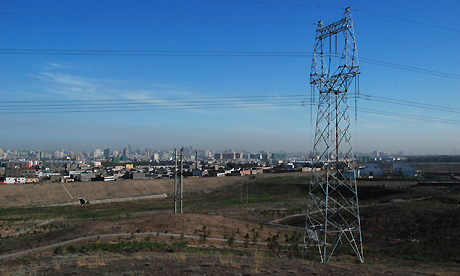I expect Unity College will be providing some of these crews.
Mick
Group seeks to hold off winter heating crisisAn energy panel presents ideas -- including insulating every Maine home -- to Gov. Baldacci.
By TUX TURKEL, Staff Writer July 9, 2008 [Portland Press Herald]
Neighborhood teams would fan out this summer to winterize 5,000 homes in Maine, and every community would designate a "warming shelter" for residents facing a heating crisis.
All of Maine's 477,000 single-family homes would be insulated and air-sealed during the next decade, at a cost of $3 billion.
These are among the preliminary recommendations of a 90-member task force set up to prepare the state for an energy emergency this winter, and to help break Maine's heavy dependence on imported oil -- over time. The group, called the Pre-Emergency Energy Task Force, presented a draft of its initial suggestions this week to Gov. John Baldacci.
A copy of the 16-page draft was obtained Tuesday by the Portland Press Herald/Maine Sunday Telegram.
Final recommendations are due July 15, and Baldacci will then decide which ideas seem most practical, based on available money and resources. The state will be looking to the federal government for additional aid, such as low-income energy assistance, although most specific funding sources have yet to be determined.
The governor also has raised the possibility of calling a special session of the Legislature, which could modify laws or direct money to advance some of the recommendations.
"We understand that we have a very serious situation developing," said David Farmer, the governor's spokesman.
Farmer and those involved in the effort stress that state government alone can't solve the pending crisis. That's why the task force is trying to marshal the combined efforts of local agencies, businesses, volunteer groups and individuals to begin a process that will take many years and cost billions of dollars.
John Kerry, the state's energy director and chair of the task force, uses oversized analogies, such as the Apollo moon program, to describe the scale of what Maine must accomplish.
"It sounds like a grand vision, but you have to have one," he said. "The time for planning is over. We need action. That's the governor's message."
The need for action is apparent to anyone who drives a car or heats a building with oil. Average gasoline prices in Maine set a record Monday, $4.13 a gallon. The price of heating oil -- normally low in summer -- hit a new statewide average high of $4.71 a gallon. Some dealers have crossed the $5 a gallon mark, a price that seemed unimaginable last winter.
Maine is nearly 100 percent dependent on petroleum for transportation and 80 percent for home heat. Families and businesses are spending roughly $8 billion a year on petroleum, Kerry's office estimates, with most of the money going out of the country. Against this economic backdrop, Baldacci and lawmakers will be under pressure to quickly get some of the task force's suggestions in place.
The group represents a broad cross section of Maine's political, business and advocacy communities. Members include utilities, environmental groups, charities and banks. Their recommendations are broken down by subject, including transportation, housing and finance.
For instance: The task force highlighted a need to keep the state's elderly and most vulnerable residents warm in their homes. A first step would be to mobilize local teams to seal air leaks and perform basic efficiency measures for eligible homeowners.
Civic groups and faith-based organizations would lead the way, using state-provided "warm kits" that include weatherstripping, compact fluorescent light bulbs and other basic efficiency products. This effort would build upon the state's existing Keep Me Warm program, with the aim of reaching 5,000 households before winter. The cost of 5,000 kits is $300,000. Money could come from the federal program for low-income energy assistance.
Looking ahead to cold weather, charitable groups would be asked to work with local and county officials to help address acute needs of isolated elderly and poor residents. The primary goal is to keep people warm in their homes, the draft report says, but temporary "warming shelters" at unspecified locations in each town should be set up to make sure people have heat and food in a crisis.
Longer term, the state would set a goal of cutting residential energy consumption by 18 percent to 30 percent. At today's prices, cutting consumption by 18 percent could save the state's economy $1.7 billion over 10 years, the draft report estimates.
The report also calculates what it would take to weatherize 477,000 homes over 10 years. The job would require 500 crews and cost $3 billion, with money coming from bonds and below-market-rate loans.
An average house could save $712 a year, assuming oil costs $4.60 a gallon. A challenge, aside from funding the program, would be finding enough energy auditors and insulation contractors to do the work.
The task force also suggests expanding the state's GO Maine van pool and ride-sharing programs, buying more buses and extending passenger rail service. Employers would be encouraged to consider four-day work weeks and telecommuting.
Whatever recommendations emerge, the state plans to create a public education and outreach program supported by an Internet site. It will be part of the recently consolidated energy assistance information at www.maine.gov.


















